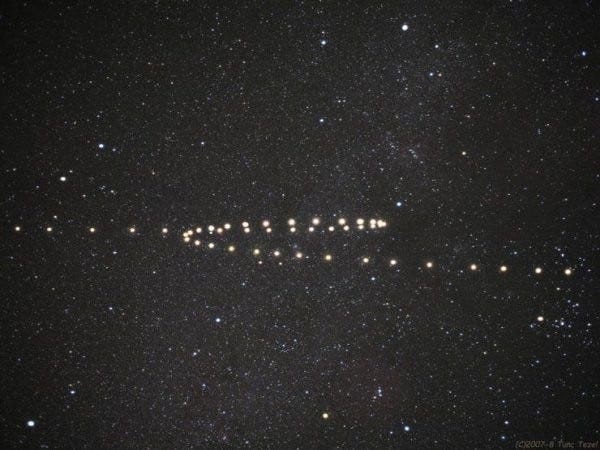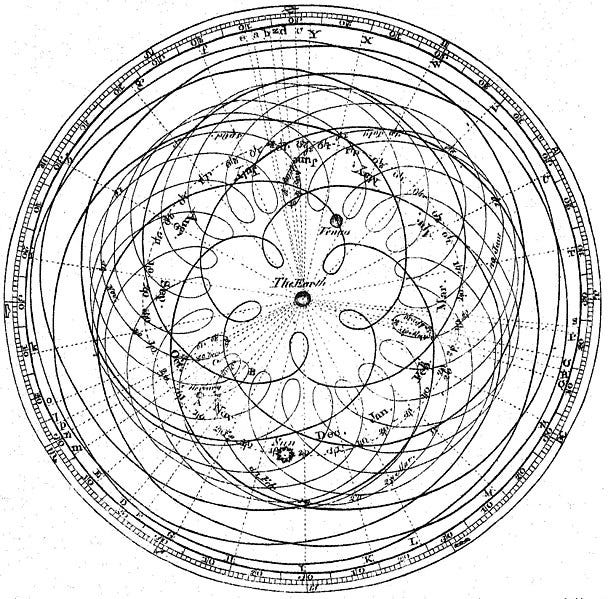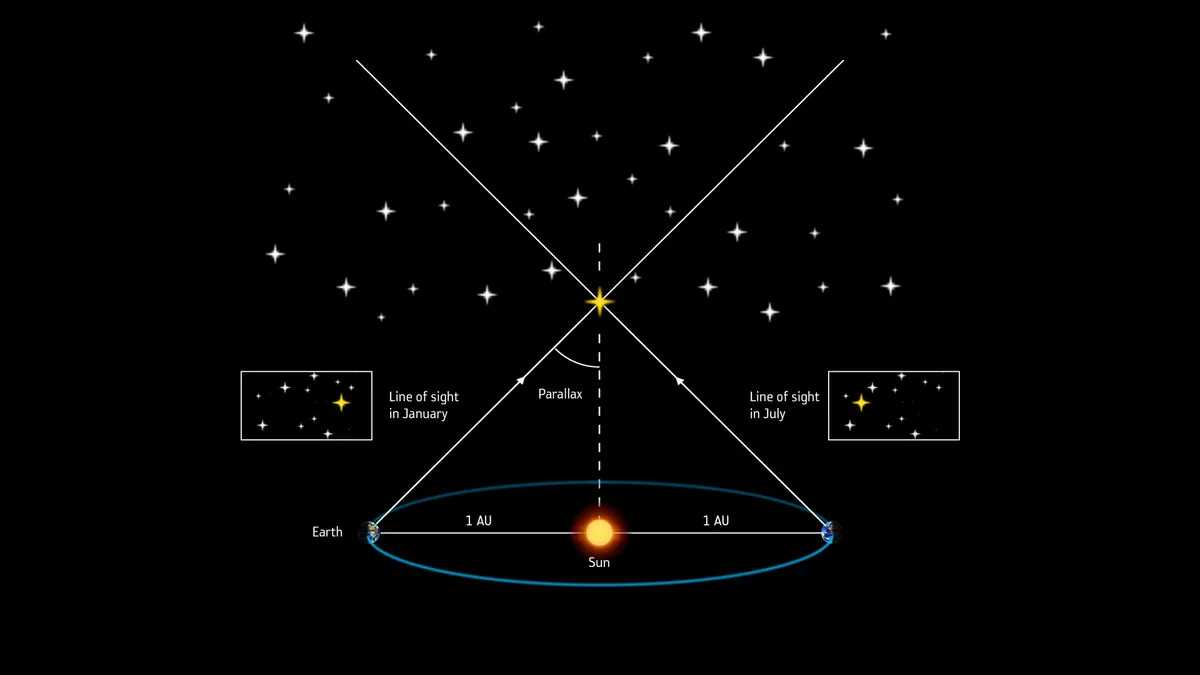Physics Rediscovered #7: It's TNMT time!
Teenage Mutant Ninja Turtles is one of the most insane titles of anything, ever.
A combination of four random words that should never be uttered in any sentence by anyone in their right mind. Yet, one can only aspire to come up with something equally as great.
There was a time, when, as a kid, I would shout it out and not even flinch, like it was totally normal. I mean, it's descriptive and accurate as to what those turtles are but in the same spirit The Terminator should be Murderous, Bodybuilder Robots From The Future.
The 80's were a magical, cocaine-driven, acid-fueled, testosterone dripping time...
Which is a perfect segue straight to the Renaissance.
It was also a magical time.
It was when people finally learned to paint properly so art no longer looked like the scribbles of a 5 year-old. It was a time when one's status was determined by the size of one's forehead, as seen on those paintings. It was a period when the smarter people were inventing flying machines, similar to today's helicopters, just so that they could get off this crazy planet.
Now you might think that I'll be rambling about Leonardo, Donatello, Michelangelo, Raphael, Pavarotti and Lamborghini, but no.
These dudes and their contributions have already been analyzed to death, brought back to life and analyzed again.
I want to put a spotlight on their cousins who, in my not so humble opinion made a much more significant dent in reality.
Cowabunga!!!
Like a circle in a spiral, like a wheel within a wheel
"Tell me, why was it natural for people to assume that the Sun went around the Earth?", Wittgenstein asked a friend. "Well, obviously because it looks like that", answered the friend. "Well, what would it look like if it was the other way around?!"
Ludwig Wittgenstein was a disturbed individual but this paraphrasing of his famous quote shows some on point thinking, especially if you want to get into innovation.
In reality, it was not all that natural for people to assume that the Sun went around Earth. We have evidence that ancient Greeks gave this idea some thought. One of the most widely cited is Aristarchus of Samos. He took a bunch of measurements during lunar eclipses, did some trigonometry on that and concluded that the Sun is about 7 times larger than the Earth.
What the hell, right? This is not even close. Regardless, he was convinced that the larger object should exert more attraction. If so, then why would the smaller Earth force the Sun to move? Funny how he already had some intuition about gravity, huh?
These notions were echoed in different variations through the ages also in Islamic astronomy and even medieval times but never caught on as mainstream.
And that is just embarrassing, if you ask me.
You see, the geocentric model suffered from at least two major problems, that it had serious trouble dealing with.
One is the retrograde motion of planets. Retrograde means that the planets seem to change their direction of movement for a while, then go return to the previous direction, as observed night by night. The other is that the planets seem to change their distance from the Earth from time to time for no apparent reason.
These problems become immediately obvious if you think (like Aristotle did) that the Earth is in the center of things and everything else moves on fixed celestial spheres around it.
So what do you do if a sphere is not enough? Well, you add more spheres, obviously. Quite imaginative, yeah?
If you do that you end up with spheres upon spheres, upon spheres. You've got to have enough nested spheres to explain away the strange planetary motion. This is what Ptolemy, the most famous astronomer of the Roman Empire, introduced.
He called it the epicycles and it looked somewhat like this.
This was the golden standard for understanding planetary motion for centuries. I mean, just think about it. Generations of people looked at this and thought it was fine.
The reason I said it's embarrassing before is that all this time there were people suggesting a different way of thinking, which would greatly simplify the picture. But I guess everyone liked tradition better.
Okay, credit where credit's due, the introduction of epicycles was a brilliant move if somewhat misguided. Expanding complex movements into a long series of basic components will become a powerful tool of mathematical analysis in the future. In that context Ptolemy's work was way ahead of his times.
Hold my beer, Aristotle
The straw that finally broke the camel's back was the work of not so teenage, allegedly a mutant, secretly a turtle and most definitely a ninja - Nicolaus Copernicus.
Now, I find biographies usually pretty boring and easy to look up, so I won't get into that. I'm more interested in reading people's minds, even those long dead. That's fairly impossible but that's not going to stop me from doing it anyway.
So we can't really know what was going through Copernicus' mind when he was trying to rearrange the Universe but we can make some educated guesses. We can also make some absolutely wild, unfounded guesses. Writing is fun - I can do whatever the hell I please.
First of all, he received an education from the top schools of his time, like the universities of Bologna, Padua and Cracow. This already places him as one of the top minds of his time. During his studies, he was exposed to the then well accepted knowledge of the ancients like Aristotle and Ptolemy and how they understood the Universe.
At the same time he was an obsessive observer of the night sky. Neither his student duties, or later church and civil bureaucratic obligations distracted him from that. I suspect that he didn't sleep, like at all. That's a mutant right there.
Putting the two together in a single mind should make that mind suspicious, because they do not align. No amount of epicycles or other fancy tricks could account for all the observations.
That's how it played out for Copernicus. He saw that the geocentric model proposed by the ancients doesn't hold up properly. He was not the first one but him it became too much. He couldn't take it and got to work.
In the process, he figured out that if we just drop our self-importance for a minute and place the Sun in the center of the Universe, rather than the Earth, then the Universe becomes a better place.
Suddenly, the retrograde motion of planets makes perfect sense, as it is just one planet overtaking another on their respective orbits, like this:
And oh look, this is also why planets sometimes appear closer and sometimes more distant. It's because their orbits sometimes brings them closer and sometimes not.
Brilliant. As the saying goes, do not spend a minute solving a problem unless you've spent an hour trying to reframe it.
Now, Copernicus knew that his heliocentric model could not account for all of the observed planetary motions. He was forced to keep planets on rotating spheres with some epicycles added. Not perfect, but what a leap forward.
All of that took almost 30 years. It became known as the De Revolutionibus Orbium Coelestum, or On the Revolutions of the Heavenly Spheres for those of you rusty with your Latin.
Why 30 years? Because Copernicus was a bit anxious about the reception. He was sufficiently aware that his work contradicts not only mainstream cosmology, but also philosophy and theology. Were you ever so stressed about submitting a report that you've dedicated it to the Pope? Well Copernicus did exactly that with On the Revolutions...
However, as his work progressed, it also became popular around Europe, which made his peers, friends, students urge him to share his findings.
Even the goddamn Vatican pressed him to move forward. Imagine that? This is a fragment of what cardinal Nicolaus von Schönberg had to say to Copernicus:
Therefore with the utmost earnestness I entreat you, most learned sir, unless I inconvenience you, to communicate this discovery of yours to scholars, and at the earliest possible moment to send me your writings on the sphere of the universe together with the tables and whatever else you have that is relevant to this subject ...
And communicate he did in 1543. He also decided to die on the same year, almost like he didn't want to be around for the fallout. Well, he would've been wrong about that.
The Universe turned out to be a flop
I'd like to say that his work caused earthquakes, tsunamis and general mayhem, but none of that happened. In fact, the critical reception was kinda meh. People knew about his work before publishing so it wasn't a great surprise.
Several universities incorporated heliocentrism into their programs but as a alternative to geocentrism rather than a replacement. That's a measure of some success, I guess.
There was also some criticism coming from contemporaries. A lot of it was theological nonsense but one physical argument was kinda legit. That one was the parallax problem.
This is important so pay attention.
The parallax is simply the phenomenon where an object observed from different places seems to shift against the background, which it is observed on. For example, our two eyeballs, serve that purpose. Both somewhat separated, both looking at slightly different picture, which our brain then uses to judge distances to objects.
The same applies to viewing the night sky from Earth. We take a picture, wait as our planet does a half-rotation and take it again. In practice it's like we just observed the same sky from opposite sides of the globe. This is called the daily parallax.
Now the greater the distance between observation points, the better our estimation of the distance to far away objects. We can utilize this effect to push the parallax even further. Take the Earth's orbit, for example. You take a picture, wait for our planet to do half an orbit and take another one. This time it's like we just observed the sky from opposite sides of the orbit. Like this:
This is actually the reason people took issue with Copernicus' work. "If the Earth really does go around the Sun", they said, "then we should be observing parallax effects on the stars".
This statement is absolutely true. Problem was that they didn't observe any effects and concluded that Copernicus was bonkers. It would take centuries before we got a handle on telescopes powerful enough to observe stars parallaxing all over the place.
In addition, the Copernicus' delivery was pretty technical and complex, making it readable to few people at the time. On the Revolutions... is absolutely littered with tables containing observational details of various bodies as well diagrams depicting reasoning using spherical trigonometry. Sometimes it also goes from mathematically specific to esoteric. Here is the full translation with references to the original. Try it if you dare - it's a mental trip. I couldn't get through it.
Such was the state of things for about 60 years. Then, all of a sudden some crazy shit started going down, so stay tuned for the next episode. For the moment, let's pass that time somewhere else.
It's not just new - it's super new
Our story takes us to Germany where two severely drunk Danishmen get into an argument. The problem they seem to be having is who is the better mathematician. Yes, two nerds spazzing out over who's the bigger nerd. The argument escalated quickly, leading to a duel.
How will they duel? With pen, paper, throwing mathematical mindbenders at each other? Nope. Don't let the nerdiness fool you. The will duel with swords, like real men. Sadly, solving mathematical arguments with duels to the death is a tradition that is no longer practiced these days.
Anyway, they swing at each other for a while, until one of them loses a piece of his nose and they decide to call it a night. A typical "just one beer, I promise" outcome.
The man, who no longer worries about having a stuffed nose is no ordinary brawler, however. His name is Tycho Brahe and he's about to make history.
Weird to argue like that about mathematics as Tycho was already a widely recognized astronomer and playboy, with royal support and a pet moose, and a cool name. He was also the last of his kind - the last astronomer to work without a telescope.
However, that didn't stop him from witnessing something earth-shattering in 1572, though it happened in the sky.
He saw a light that wasn't there just a moment ago.
It cannot be overstated what a big deal that was. Again, everybody at the time was riding on ancient philosophies, courtesy of Aristotle, that the spheres of the stars are fixed, frozen in time and simply rotating around the Earth. No new stars allowed!
And yet, there it was, as bright as Venus.
This was a revelation of such magnitude that many people just went straight into denial. They tried to explain it away, saying that it must some phenomenon in the spheres of the Earth or Moon or somewhere else, close-by.
However, Brahe showed that they are full of shit. How? Remember the daily parallax from earlier? Well his observations showed that the new star or nova, is insensitive to that parallax. This means it's really, really, really far away, unlike the Moon.
Today we know that he saw two stars, one of them somewhat dead and consuming its partner (more on that in the future), and we call it Tycho's supernova. Super, because we wanted to differentiate it from other novas. Tycho's is to acknowledge his contribution in observing the phenomenon, which he diligently published in a book with the most wonderful title: "Concerning the Star, new and never before seen in the life or memory of anyone".
This is what the supernova looks like today, almost 500 years later:
Despite overwhelming evidence of a paradigm shattering occurrence many of his contemporaries still didn't want to accept the consequences. Tycho took no prisoners and called them out publicly as "blind watchers" and "thick wits". Some things never change...
While doing all that science, Brahe never failed to remain cool. Flamboyant parties, excessive drinking, exotic animals, psychic dwarfs, you name it. Don't talk to me unless you have a story about your friend - the moose, getting drunk off its antlers, falling down the stairs as a result and breaking its neck.
This lifestyle eventually caught up with him and Brahe died but not before mentoring another legend - Johannes Kepler.
Brahe was famously secretive about the data he gathered during his observations. Wasn't really into sharing because that's for communists. So let's ask the question on everyone's mind right now. Did Kepler kill Brahe to get him out of the way? There's no evidence for that and such claims were debunked. But did he really? Probably not... Almost certainly not...
Buuuut with the old man gone, Kepler dived into Brahe's legacy nose first. Brahe couldn't do that because of the duel thingy...
While he was trying to make sense of Brahe's data, another supernova occurred in 1604. What a time to have been alive, right? Kepler took diligent measurements of the new star, published his findings in a book, which made the supernova his baby and now we call it Kepler's supernova.
Again he found not visible parallax of the star, just like Brahe's on his. This was another nail in the coffin of Ptolemy and his unchanging heavens. This is how his supernova looks like today:
An obvious question to ask here is: were these the first supernovae ever observed? No. We've seen a few before Brahe's time. However, these happened when minds were finally ready to accept the message that these brought with their light.
Laws by merit, not legislation
Kepler was exactly one of those minds.
After multiple failures to reconcile Brahe's data with the understanding of the Universe at the time, he finally figured it all out.
You see, Brahe admired Copernicus' work but couldn't fully discard the geocentric approach. However, Kepler now knew that the only way that any of this can make sense is if our backyard is heliocentric.
That's not all. Kepler decided to outdo Copernicus. He was pissed off with the idea of epicycles that Copernicus couldn't get rid of. This led him to make a profound statement about the orbits of the planets. According to Kepler the orbits were not circles, as disappointing as it was. The planets travelled on ellipses.
Today we know this as Kepler's first law. By introducing elliptical orbits he got rid of the epicycles once and for all, dealing a brutal and crushing blow to the old cosmological philosophies of the Greeks.
This kind of thinking has consequences. One of those is that bodies on elliptical orbits have different speeds at different times, unlike on a circular orbit. This is annoying, as we like at least something constant. Make it easier to think.
Kepler does not disappoint here neither. There's a constant and that is the area speed.
Let me explain. Connect the Sun and Earth with a wire and let the Earth move for some fixed time. That wire is going to sweep an area of some size. Now do the same thing but at a different place on the orbit, again for the same amount of time. The wire is going to sweep a new area. Turns out that the size of that second area is going to be exactly the same as the first one. That's Kepler's second law. Here's how that looks:
That's already a lot but Kepler had one more law in him. The first two were fine but they were not good enough for him. They were specific and he wanted something simpler and more general.
For now all the planets seemed to have unrelated orbits in terms of size and speed. He was annoyed that he couldn't find something more that would connect the motion of all the celestial bodies together. Mind you, there was no reason believe that anything like that should exist in the first place.
It takes a special kind of mind to push forward despite zero guarantee of a success. Some would say that it's brilliant, some would say it's delusional. You be the judge of that.
Kepler never figured out what that is exactly but he came damn close. By reading his "Harmony of the Worlds" we can see how he felt when he finally formed what later became Kepler's third law:
... after I had by unceasing toil through a long period of time, using the observations of Brahe, discovered the true distances of the orbits, at last, at last, the true relation... overcame by storm the shadows, with such fullness of agreement between my seventeen years' of labor on the observations of Brahe and this present study of mine that I at first believed that I was dreaming...
Did you notice the double "at last"?
This law states that in orbit, the cube of the semi-major axis is proportional to the square of the orbital period. Mathematically expressed as:
This is true for all bodies in orbit (see next episodes for the "why") and this is Kepler's victory. This law is also cool as it allows us to figure out the distance a planet has to its star, simply by figuring out how long does it take for it to make a full orbit.
Kepler's discoveries, as stated in his three laws, were profound for at least three reasons:
They completely demolished the ancient ways of viewing the night sky and cosmology as a whole. No longer were the heavens fixed for eternity. Stuff was happening there all the time.
Seemingly complex, specific and uncorrelated phenomena may just be manifestation of simpler mechanisms, even though it seems unlikely. This way of thinking led to groundbreaking advancements in science ever since.
For the first time in history someone showed that the Universe is governed by mathematical laws. We were no longer just running blind through a world where things happen at random or because the gods are bored.
All of this paved the way for "new physics" and we will continue this story in the next episode.
See you there!









